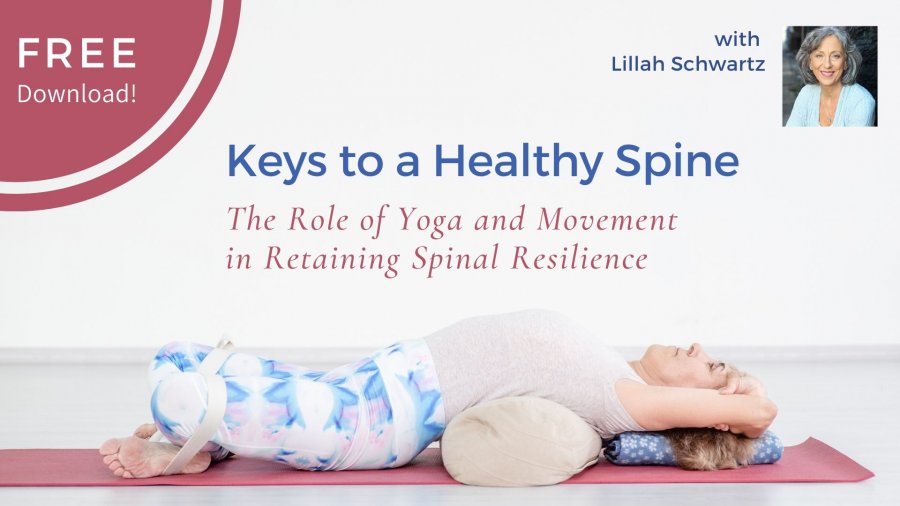Free Download! Keys to a Healthy Spine - The Role of Yoga and Movement in Retaining Spinal Resilience
Course Info
- Price:
- $0.00
Lillah Schwartz
 Lillah Schwartz, C-IAYT Certified Yoga Therapist, E-RYT 500, is an Asheville-based yoga teacher, teacher trainer, and author, with more than 40 years of experience. She shares with students what she has learned from years of study with master yoga teachers, along with ongoing exploration about...
Lillah Schwartz, C-IAYT Certified Yoga Therapist, E-RYT 500, is an Asheville-based yoga teacher, teacher trainer, and author, with more than 40 years of experience. She shares with students what she has learned from years of study with master yoga teachers, along with ongoing exploration about... 
It’s hard to underestimate the importance of the spine for bodily functioning. In yogic philosophy the spine is the energetic center of the body, the shaft through which Prana, the life force, moves.
In Western anatomy as well, the spine is a vital center of the body. It is key to our structural health and balance, which determines our ability to move with freedom and agility.
But even more importantly, the spine houses the spinal cord, the epicenter for the flow of nerve information between the brain and all parts of the body. Without the integrity of the spinal cord, our health suffers.
Keeping our spine healthy is vital at any stage of life, says yoga teacher and back care specialist Lillah Schwartz in this free download. But it is particularly important if we want to continue to live an active, pain-free life as we get older.
How do we keep the spine healthy, and do we even have a choice?
There are many things we can do to make a difference, notes Lillah. But the main key is varied movement.
Yoga is one of the few forms of movement that systematically moves the spine. The older we get, the more important it becomes to keep a varied movement of the spine, Lillah explains. “Moving the spine is the #1 way to stimulate better circulation, not just to the spinal structures, but also to the organs.”
Varied movements of the spine also ensure that all of our joints–including all 26 joints of the spine–retain moisture and flexibility, Lillah notes.
Loss of resilience and fluidity in our fascial tissue can cause restricted movement throughout the body, according to Lillah. This lack of fluidity can cause pain that cannot be tied to any other known structural problem.
Tightness and loss of mobility can result from many things - repetitive movements or prolonged sitting. In either case, it’s important to cultivate a whole-body connective tissue matrix that is resilient, tenacious, and adaptable to our changing lives and environment.
Lillah stresses the importance of extending and aligning not just the physical spine, but the energetics of the spine that extend from the base through the crown of the head, including the actions of the brain and nervous system.
Yoga poses and breathing exercises can help release a sympathetic or stress response via energy moving through the center of the crown, she notes. “We're supposed to evolve as human beings, to move past our perceived limitations and evolve. And in the tradition of yoga, what happens with the spine is a reflection of that,” Lillah says.
It’s important for students to learn basic movement principles like reciprocal inhibition to expand their movement repertoire, Lillah explains. Keys to varied movement of the spine include learning how to explore the rhythm and sensation of movements such as extending, holding, and pulsing in and out of all sorts of yoga poses to make yoga a dance, and not just a static holding of poses.
You may also be interested in Lilla’s upcoming course: Restore Your Fluid Spine: Yoga for Back Care and Healthy Aging.